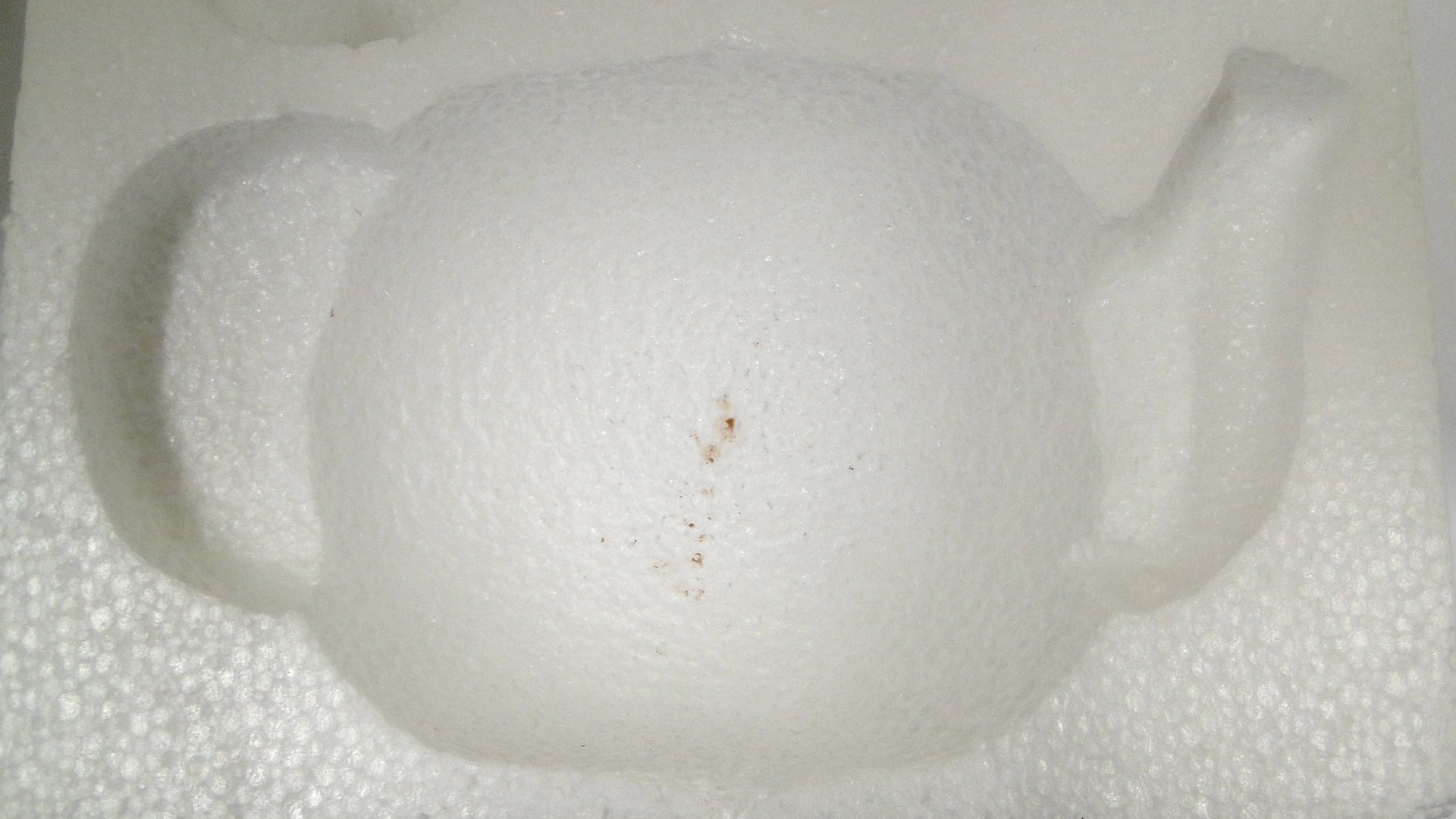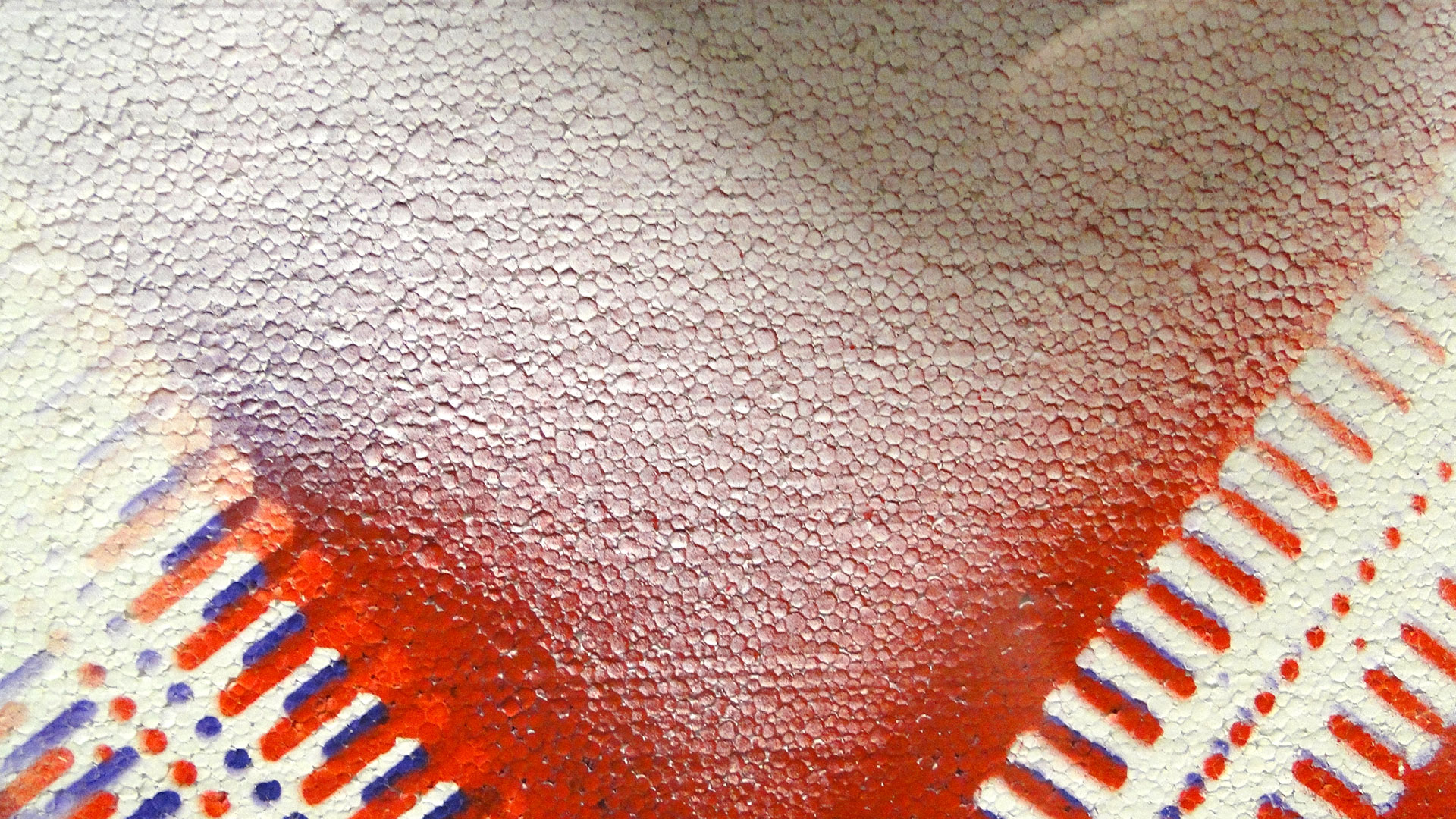Plastics
Expanded Polystyrene (PS, EPS expanded)
General information
Description
Expanded Polystyrene (EPS) is only produced as foam. It comes in sheets or blocks. It is usually white and can be recognized by its typical spherical structure. EPS makes a squeaky sound upon rubbing the surface. It is a rather hard and tough, light-weight foam. It is very susceptible to solvents, acetone will burn right through. Heat has a similar effect. Sample S-01 in the PIT-kit is an example of EPS foam.History
EPS is commercially available since 1949.Production, Application, Appearance
EPS is often sold as white panels. It is commonly used for building insulation, packing material, food containers, foam cups, packing 'peanut', and in bicycle helmets and surfboards.Properties
Material properties
ThermoplasticDensity: foam = 0.015-0.040 g/cm3
Melting point: 275°C
Glass transition temperature: 85-102°C
Identification properties
Cell structure (foam): closed - sphericalSmell: no characteristic smell
Touch: no characteristic touch
Sound: foam = squeaky
UV-radiation (when clear): not applicable
Polarizing filters (for clear PS): not applicable
Degradation
Process
Photo-oxidation; soiling (electrostatic).Details
EPS is not considered a problem plastic.Symptoms
Yellowing, surface turns matte, loss of mechanical properties resulting in tears and fractures.Susceptibility
UV-radiation: MediumLight: Medium
Oxygen/Ozone: Low
Temp: Low
RH: Medium
EPS is highly susceptible to polar and non-polar solvents, especially acetone; also for plasticizers that can be emitted by other plastics.
Preventive conservation
Recommendations
UV-RADIATION: keep below 75 µW/lm UV filter for daylight and fluorescent light - reduce intensityLIGHT: 1 slight change in approx. 30 Mlx.h Moderate light dose - control intensity and exposure time
OXYGEN / OZONE: ambient conditions
TEMP: common indoor conditions 10-30°C
RH: common museum conditions 40-60% RH fluctuations: setpoint ±10% or ±5% when allowing seasonal fluctations between 35-65%
—
Handle with care. EPS is not elastic and indentations are irreversible
Other names
- Polystyrol
- Styropor
- piepschuim
Am I dealing with...
TAGS
- Closed cell structure
- Skin
- Hard
- Ball structure
- Styrofoam, Tempex
- Squeaking sound




